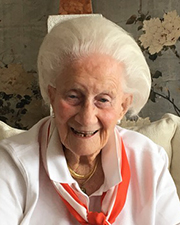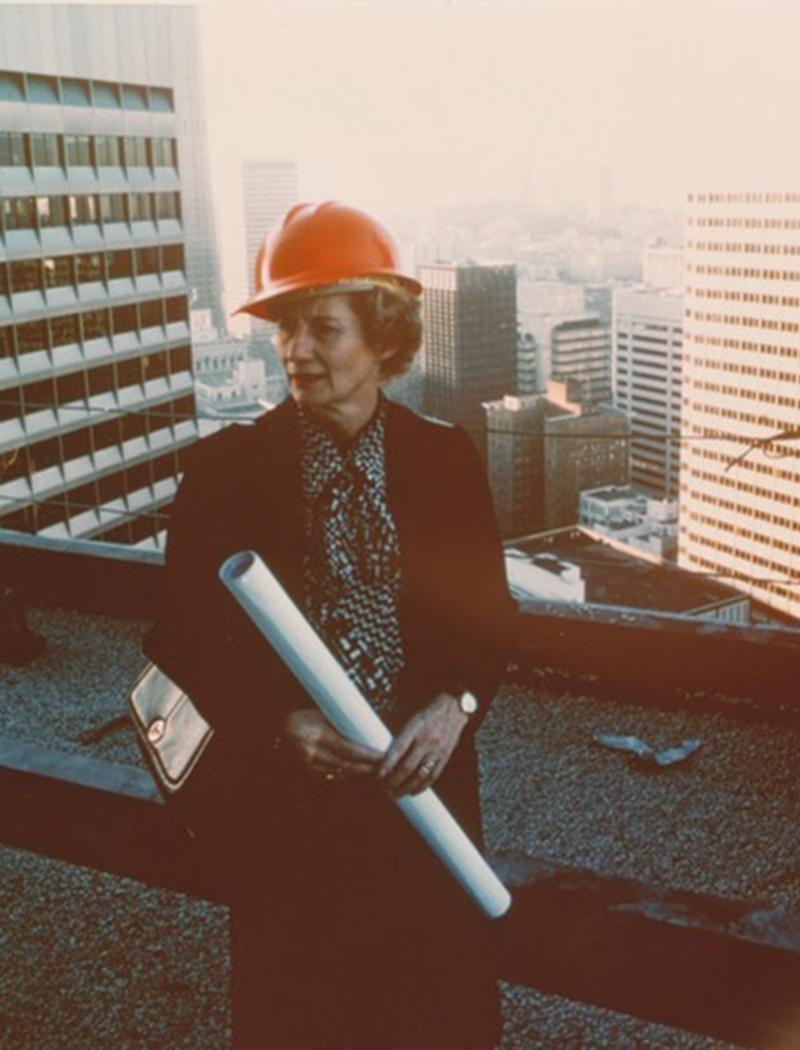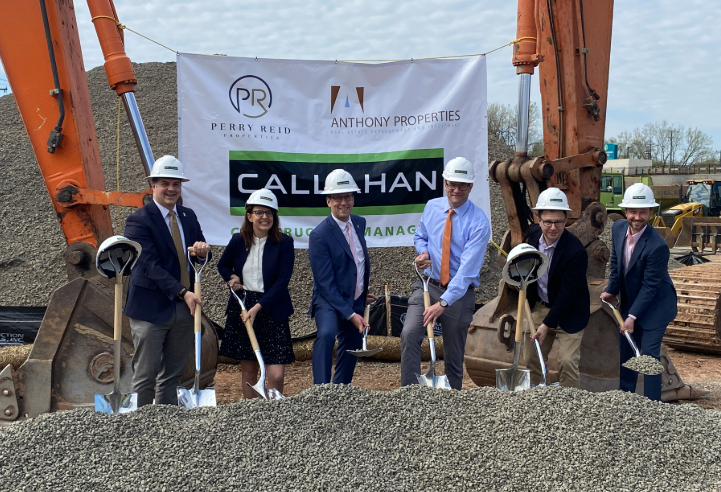Beverly Willis, architect and founder of National Building Museum, passes away at 95


Branford, CT Beverly Willis FAIA, born February 17, 1928, an American architect who played a major role in the development of many architectural concepts and practices that influenced the design of cities and buildings, died Sunday morning Oct. 1st, due to complications of Parkinson’s disease.
• Willis, FAIA began her career as an independent artist in 1954 and established her own firm as an architect in 1966.
• In 1980, she was one of the founders of the National Building Museum.
• In 2002, she founded the Beverly Willis Architecture Foundation.
• Today, Willis is included in an exhibition at the Museum of Modern Art (MoMA) in New York City, Emerging Ecologies, for her pioneering work on computer land analysis.
Willis is noted for achievements in the development of new technologies in architecture, urban planning, public policy, and her leadership activities on behalf of architects and women in architecture and allied fields are well known:
• Willis designed many works of architecture. She is best known for the San Francisco Ballet Building, completed in 1983 in the city’s Civic Center and the first U.S. building “designed and constructed exclusively for use by a major ballet company.” The late U.S. Senator Dianne Feinstein said, “As mayor of San Francisco at the time, I was proud to work with architect Beverly Willis in creating this timeless monument to the arts.”
• Willis is cofounder of the National Building Museum, in Washington, D.C.
• Willis is sole founder of the Beverly Willis Architecture Foundation, a nonprofit working to change the culture for women in the building industry through research and education, which won numerous grants including from the National Endowment for the Arts (NEA) in 2012, as well as 2022 grants from the National Endowment for the Humanities, the NEA, and the Graham Foundation.
• Willis was elected the first woman president of the California Chapter of the American Institute of Architects (AIA) in 1979. In 1976, she served on the first U.S. delegation to the United Nations conference on Habitat.
• Willis is a Fellow of the AIA (FAIA), its highest distinction, and is known as a pioneering architect whose work has included retail spaces, residences, commercial structures, and cultural facilities.
• Willis is an author of books, research and articles, producer and director of several films, and founder of institutes, a nonprofit foundation and a museum.
• Willis proudly served during World War II in the civilian air patrol as a teenager, rising to the rank of Lieutenant.
Willis developed a design philosophy of humanism, influenced by Renaissance artist-architects, and her architecture work and art have been exhibited in six exhibitions since 1952, including Emerging Ecologies at MoMA in New York, which opened September 17, 2023. She is author of the 1997 book Invisible Images: The Silent Language of Architecture (National Building Museum), and has authored several essays in architecture journals.
A successful architect, author and activist, Beverly Willis is best known for her contributions in service as a founding trustee of the National Building Museum, in Washington, D.C. In 1976, Willis joined The Washington Post art and architecture critic Wolf von Eckhardt, architect Clothiel Woodward Smith, Smithsonian architecture historian Cynthia Fields, and attorney Herbert Franklin to create the National Building Museum. Housed in the former U.S. Pension Bureau’s Headquarters, the museum was established to “advance the quality of the built environment by educating people about its impact on their lives.”
After 35 years of architectural practice leading her own firm, Willis was “astounded and dismayed” to discover that women were not represented in the architecture history books. In 2000, believing that the future is based on the past, she contacted architectural historians Diane Favro Ph.D. and Lian Mann Ph.D., who shared her concern, and joined by Heidi Gifford, together they provided the research that led to the formation in 2002 of Beverly Willis Architecture Foundation (BWAF), a nonprofit 501 (c)(3) organization—with the mission of advancing the knowledge and recognition of women’s contributions to architecture.
Said Willis, “I founded the Beverly Willis Architecture Foundation (BWAF) to fight to ensure that women in architecture have the same opportunities as men to realize their dreams and to be remembered. The creation of BWAF meshed with my broader lobbying efforts for change, including the 1978 resolution, passed by the American Institute of Architects, to support the Equal Rights Amendment. Forty years later, the profession has yet to live up to the promise of equality. Whether women will finally be able to achieve democratic equality with men depends on our collective will to forge a new professional culture of inclusion. Working together, with financial support of all committed to this mission and with our innovative programs, research and leadership, we create a more equitable future for women in the building industry.”
Architectural Influence
For more than 65 years, Willis has steadily made contributions to the architecture profession. An autodidact ever willing to take risks, Willis accepted commissions for which there were no built precedents, adopted practices that did not become mainstream until decades later, and sought research-driven solutions unique to each project. Designing separate projects during parallel years, Willis together with William Wurster and Lawrence Halprin, pioneered the concept of adaptive reuse. Her reconstruction of the internationally recognized 1890 Union Street Shops in San Francisco (1963) set an example of reconstruction and reuse of residential buildings for urban revitalization. This began a worldwide movement.
Willis introduced the first computerized programming into large-scale land planning and design with CARLA (1971), a software program developed in-house by Willis and her firm and called Computerized Approach to Residential Land Analysis. This advance has been featured in exhibitions including BUONE NUOVE donne in architettura (Women In Architecture) at the MAXXI Museum in Rome, 2021-2022, and currently in the Museum of Modern Art (MoMA) in New York as part of Emerging Ecologies, which opened in September 2023.
In 1983, Willis designed the first dedicated ballet building in the United States, the San Francisco Ballet Building (1984). This design influenced designs of many ballet buildings that would follow. Her designs for the renovation of Glide Church and her prototypical design for Manhattan Village Academy Charter School within an existing building, created new way of thinking about building types. For these and the other significant projects in her design portfolio, Willis has received many honors, awards, and citations.
“Her humanistic designs combine an artist’s appreciation of light, color, and texture, and a designer’s understanding of form and proportion that serve to enhance the experience of space and to communicate directly to the senses,” according to Cynthia Phifer Kracauer, AIA, executive director of Beverly Willis Architectural Foundation.
About the Ballet Building, the Honorable Dianne Feinstein, U.S. Senator, said, “As mayor of San Francisco at the time, I was proud to work with architect, Beverly Willis, in creating this timeless monument to the arts.”
In 1995 Willis created the Architecture Research Institute as a think-tank to develop and advocate urban policies through interdisciplinary partnerships between academics, governments, corporations and the public. The institute sought to “promote research in design and planning that informs public policies and strategies that create livable, compact, global cities that are eco-sustainable, walk-able and less automobile dependent.” The Architecture Research Institute developed and advocated urban policies to make global cities more livable. After the attacks on the World Trade Center on 9/11, the institute co-founded Rebuild Downtown Our Town (R.Dot) with Susan Szenasy, editor Metropolis Magazine. R.Dot mobilized hundreds of designers, professionals, and civilians to create a coordinated response to help guide the rebuilding effort and establish a planning framework for the city of New York.
Laurels
In 2014, Beverly Willis was asked by the AIA to receive the institute’s Gold Medal, bestowed posthumously that year to Julia Morgan, making her the first woman to receive that honor. Willis accepted the medal on behalf of Julia Morgan and “all women architects.” Major awards and honors earned by Beverly Willis throughout her lifetime have included the 2018 AIA New York Visionary Award, sponsored by the Center for Architecture in New York City, as well as a California Council of the AIA Lifetime Achievement Award in 2017 (given by the largest U.S. contingent of architects). Others include the 2015 New York Construction Award for public service, sponsored by the New York Building Congress, the American Council of Engineering Companies, and the American Institute of Architects New York Chapter, (AIA-NY), awarded to the Beverly Willis Architecture Foundation. Other distinctions include:
- Honorary naming of the Beverly Willis Library at the National Building Museum, Washington, D.C.
- 2015 American Institute of Architects New York Chapter (AIA-NY) Special Citation, awarded to Beverly Willis
- Lifetime Achievement Award from the National Association of Professional Women in Construction, 2011
- Top Women in Real Estate Award, New York Resident Magazine, 2010
- American Planning Association’s New York Metro Chapter’s Lawrence Orton Award for Excellence in City and Regional Planning cited Rebuild Downtown Our Town, co-directed by Beverly Willis, 2003
- Montgomery Fellowship, Dartmouth College, 1992
- National Association of Home Builders, Merit Award, River Run Residence, St. Helena, California, 1985
- California Council of the American Institute of Architects Merit Award, Margaret S. Hayward Playground Building, San Francisco, 1984
- Gold Nugget Grand Award, Pacific Coast Builders Conference and Builders Magazine, for Best Recreational Facility, Margaret S. Hayward Playground Building, San Francisco, 1983
- Honorary Doctorate of Fine Arts, Mount Holyoke College, 1981
- Fellowship, in the American Institute of Architects, 1980
- American Institute of Architects (AIA) Award of Merit, 1976 Homes for Better Living Awards Program, Vine Terrace Apartments, San Francisco, 1976
- U. S. Government Delegate to “Habitat I” the 1976 United Nations Conference on Human Settlements, 1976
- Phoebe Hearst Gold Medal Award for Distinguished Service to San Francisco, 1969
- Award for Exceptional Distinction for Environmental Design for work on Union Street by the Governor of California, 1967
- AIA Bay Area Award for Union Street Store Development at 1980 Union Street, 1967
- Significant Achievement in Beautification Citation by Buildings Magazine for the Transamerica Title Building in Oakland, Calif., 1966
- Merit Award in Office Renovation for the Campbell-Ewald Building, San Francisco, by the American Institute of Building Design, 1965
Beverly Willis also led the creation of several films related to her work and to architecture and the roles of women in architecture. She wrote and directed “100 Women Architects in the Studio of Frank Lloyd Wright – ‘A Girl is a Fellow Here’” (2009), produced by the Beverly Willis Architecture Foundation, as well as the 17-minute documentary film “Unknown New York: The City that Women Built” (2018), which highlights the many female architects, engineers, and builders behind 234 projects in Manhattan.
With the Beverly Willis Architecture Foundation, Willis also produced “Built for Ballet – An American Original” (2011), “The Artist Beverly Willis – Honolulu and San Francisco, Years 1948– 1968” (2013), and “The Architect Beverly Willis – San Francisco and New York Years 1958–1995” (2013), the latter in collaboration with the Beverly Willis Archive.
Professional Information
Willis’s last location of office was Beverly Willis Architect, 6 Rockland Park.
Innovations in practice by Beverly Willis and her firm have included her revolutionary reinvention of Glide Church in 1972, with its semicircular stage, high-tech two-way communication system, and a lighting system that would change the colors in the room. The successful renovation influenced congregations nationwide. Willis also designed a prototype for the new concept of charter schools for the Chancellor of the New York City Department of Education in 1996. Different from a typical public school, Manhattan Village Academy debuted the new educational facility concept which was a model for other schools regionally.
Thirteen of Willis’s most significant projects are housed at the Library of Congress. Her archive of architecture drawings is located at Virginia Tech Libraries. A collection of her art and painting is housed by the University of Hawaii Museum.
Personal Information
Beverly Willis is known to family and friends as Bev. She married Wanda Bubriski in 2008. Willis is survived by her spouse.
Willis was born in the heart of the Great Depression in Tulsa, Oklahoma in 1928 to a nurse, Margaret Elizabeth Porter, and an oil man named Ralph William Willis who was also proprietor of Willis Tool Company. They divorced when Willis was six years old, and Willis was placed in an orphanage. She left and later played semi-pro softball. Her brother, Ralph Gerald Willis and a half-sister from her father’s first marriage are also deceased. Her spouse Wanda Bubriski survives her.
Willis attended Classen High School in Oklahoma City, and later Franklin High School in Portland, Ore. In 1945 she enrolled at the University of Southern California, one of 200 women. Later she enrolled at Oregon State University in aeronautical engineering. She graduated from University of Hawaii with a Bachelor degree in Art in 1955. She was awarded an Honorary Doctorate degree by Mt Holyoke College in 1981.
Highcap Group brokers $41.1 million sale of two building multifamily portfolio
Norwalk, CT Highcap Group has completed the sale of two luxury multifamily properties with a total of 120 units for a combined purchase price of $41.4 million.








.png)